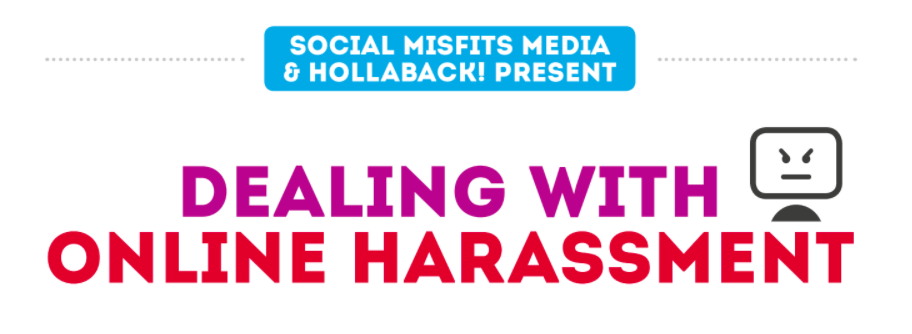Dealing with Online Harassment for Charities and Non-Profits

Many organisations struggle with and are unclear on how to deal with negativity online. If an organisation deals with online harassment in the wrong way, either by ignoring it or simply deleting it, it could be detrimental.

Online harassment is more prevalent online than ever before, especially towards organisations working with vulnerable people, and it’s important for charities to feel safe and confident when dealing with online harassment. According to a study carried out last year by the Data & Society Research Institute that surveyed 3,002 Americans, women are disproportionately affected by online harassment. 20% of young women aged 15-29 reported online stalking (compared with 8% of all internet users), and 41% of women aged 15-29 self-censored in order to avoid online abuse. LGBTQ Internet users are also more than twice as likely to experience online harassment than heterosexual Internet users. Although there are no studies looking exclusively at the effects of online harassment on charities, it’s clear that many deal with online harassment on a regular basis, and view it as a serious threat.
Our friends at Social Misfits Media have teamed up with Hollaback! to develop an infographic to help charities and non=profits deal with online harassment. The infographic has a flowchart for you to follow when you receive negative comments on social media. It’s intended to be used in the moment, to help you deal with specific situations when they arise. It’s available to download for free so you can share it with your team, print it off, and put it up in your office, to make sure all of your staff feel safe and in control when dealing with any form of online harassment. This will make sure any harassment is dealt with efficiently and consistently and can be especially helpful for organisations who have multiple team members or volunteers who help to run social media accounts.
Emily May, Co-founder and Executive Director of Hollaback! says: “Online harassment is on the rise globally, and organisations doing great work are increasingly targeted. We’re proud to partner with Social Misfits Media on this infographic to help teams distinguish between what is and isn’t online harassment, and figure out what to do when online harassment occurs.” May highlights the importance of this guide by adding,“ Too often we see organisations eager to ignore online harassment, only to discover later that the harassment poses a security risk, or that it’s silencing staff from speaking out online. This guide is a first step to deciding what is or isn’t online harassment and then responding to it. We’re in the process of issuing further guidance on what organisations can do to further improve their security and meet the needs of staff directly impacted by online harassment, so stay tuned!”
Our hope is that you find this guide gives your staff and organisation the knowledge and confidence to deal efficiently with online abuse, so that you can continue to focus on the great work you’re doing, and reaching those who need your help the most.
Latest articles

In a world of growing uncertainty, small and local non-profit organisations often find themselves with competing priorities and struggle to plan how to allocate their available resources. Despite the increasing demand for their vital work, they are not always able to allocate the funds they receive to strategic planning and future growth.

As the world becomes more digitally-focused, it’s essential for nonprofits to have a digital presence. With more and more options for online engagement, we know that this can be challenging for nonprofits to tackle. But, we also know that it is a huge opportunity to increase audience engagement, awareness and fundraising. To help nonprofits navigate this, we’re going to explore the “whys” and “hows” of creating a nonprofit digital strategy. We’re even providing a free digital strategy canvas to help nonprofits improve their online presence in just a few steps.
Related posts

Facebook recently announced that they are removing Facebook Analytics. Facebook Analytics was a tool that allowed individuals to see how their Facebook followers were interacting with their pages and content. As of June 2021, it is no longer available, but what does this mean for your organisation and your social media data?

Instagram is a visual channel that helps you build an engaged community of people who are following your cause.
See who we help
Contact us
Want to learn more?
Email Jonathan and start a conversation





